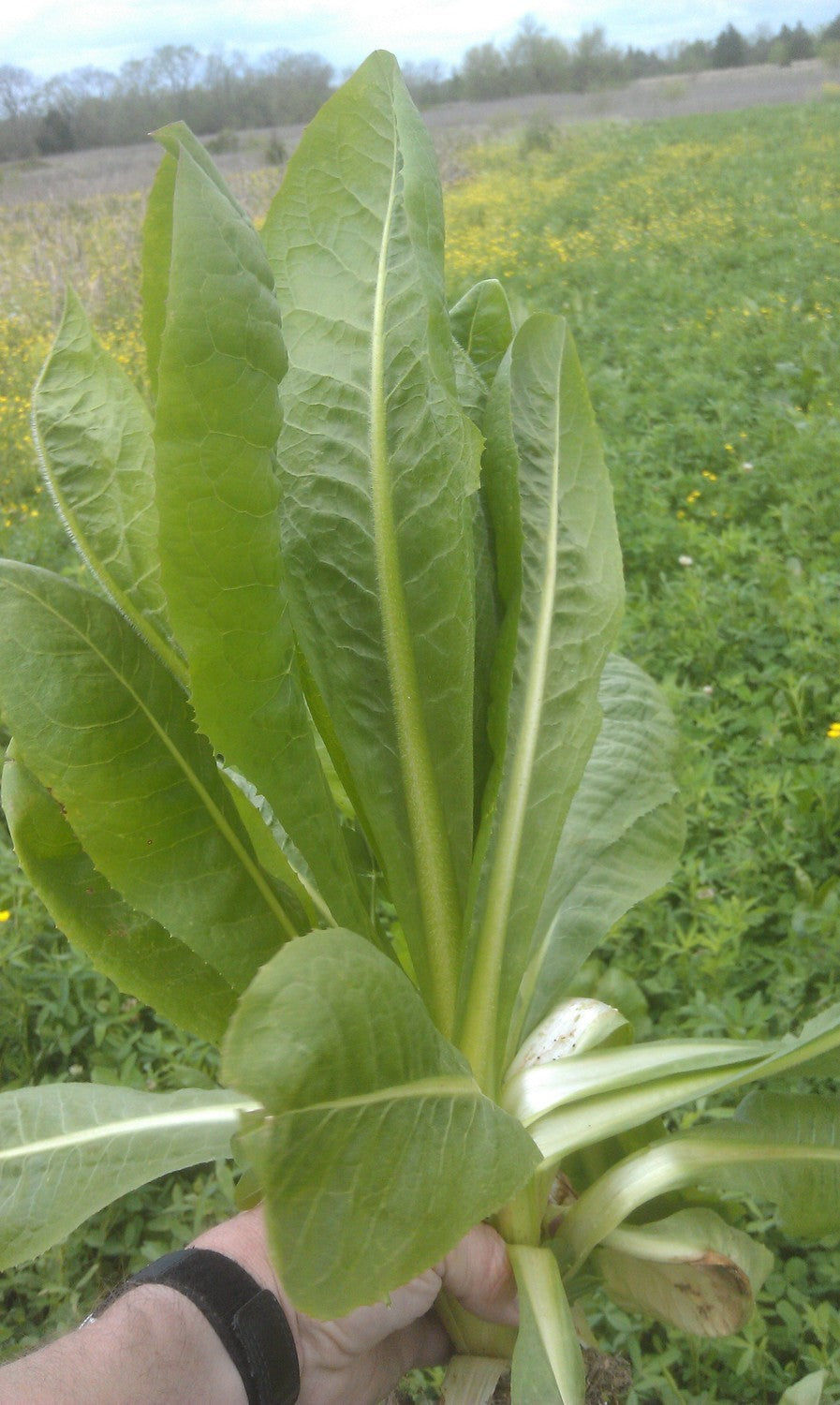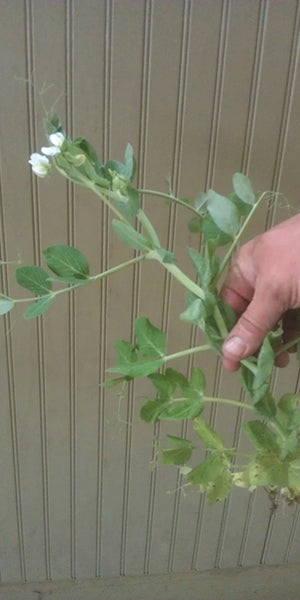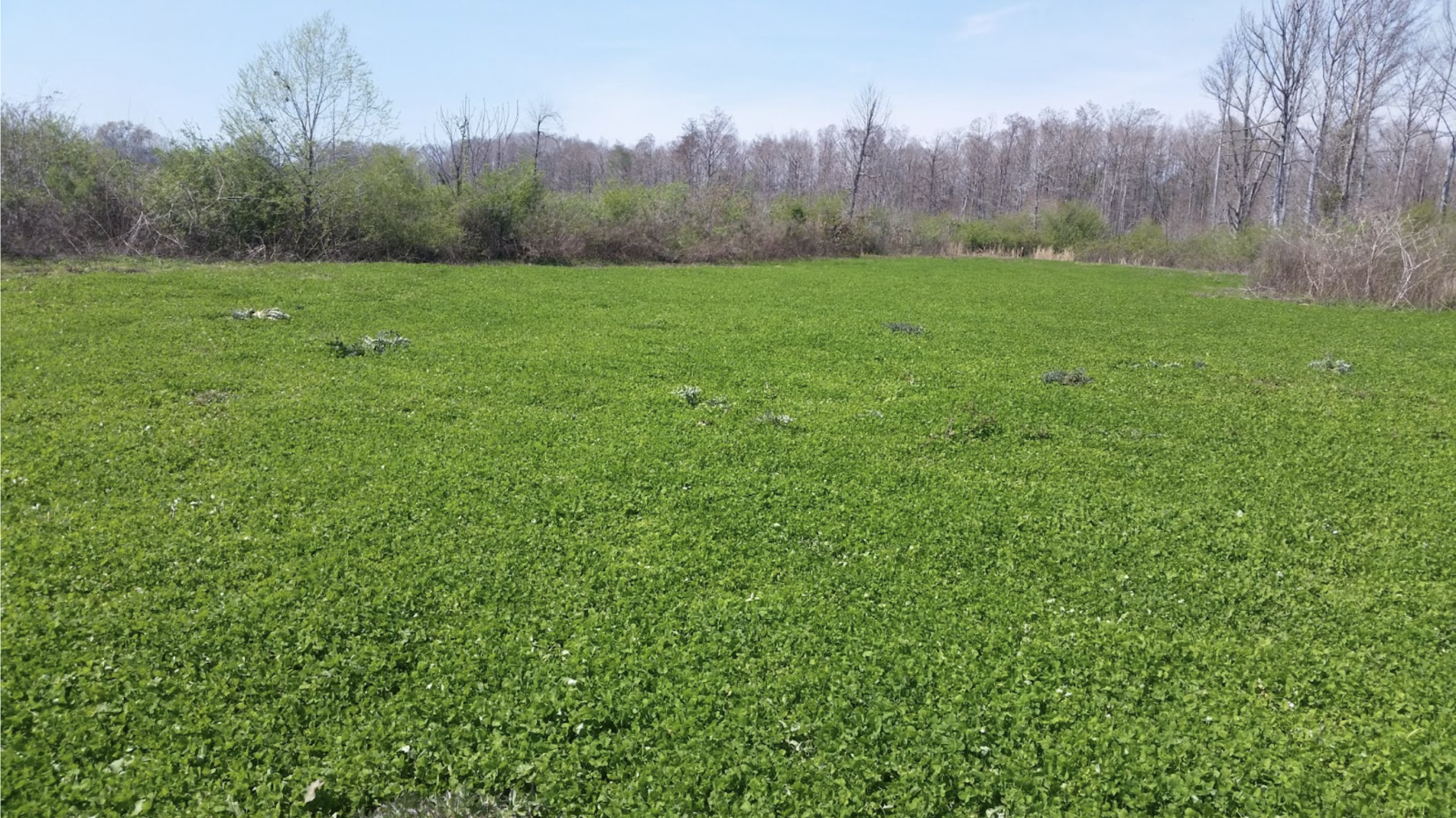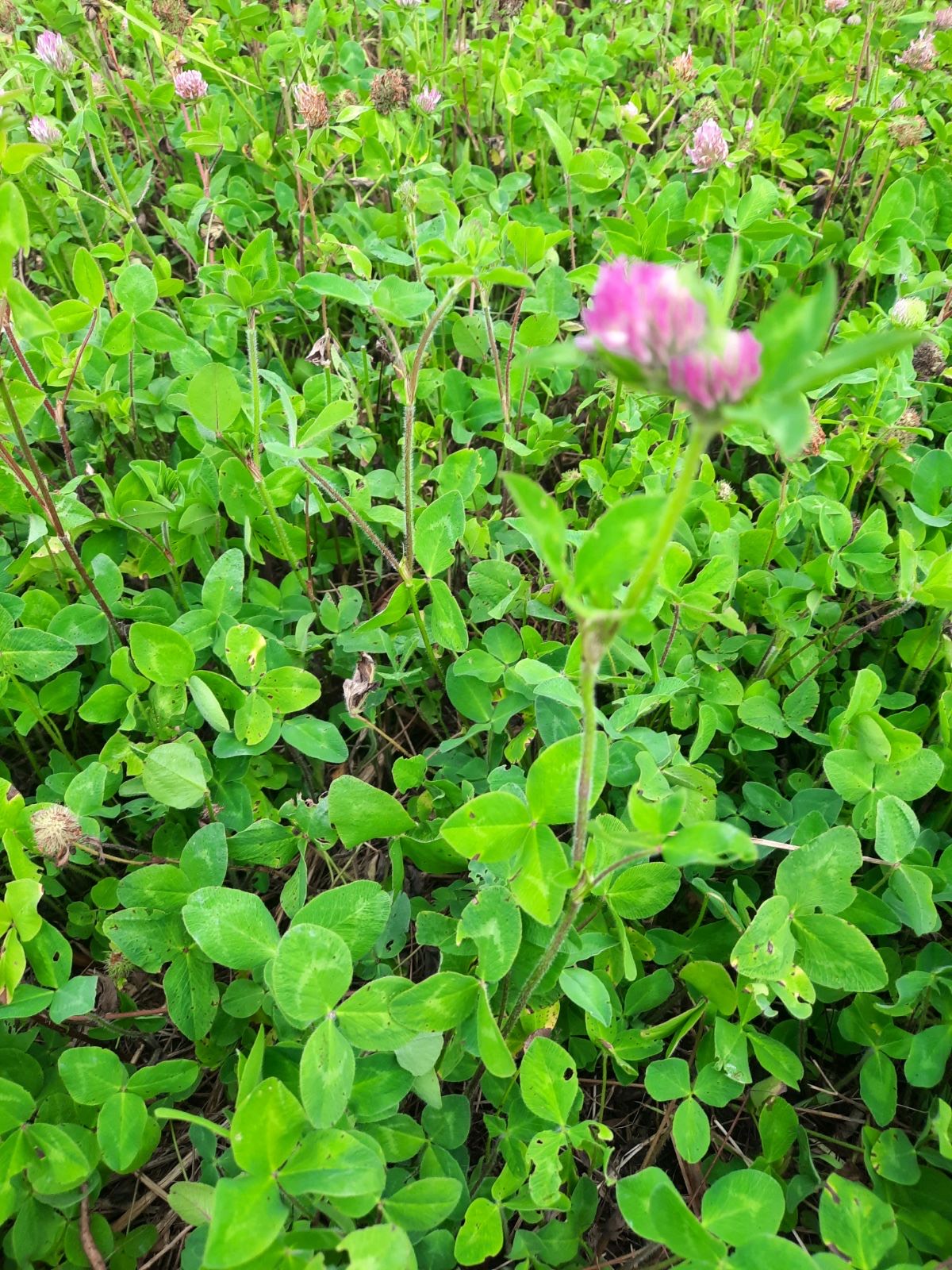The Right Seeds for Success.
At Wildlife Management Solutions, Inc., we know wildlife seeds. Our staff of wildlife professionals are here to help. We have hands-on knowledge of every wildlife seed we sale. Need help with which seed will best fit your project, soil type, or climate?
Just give us a call or send us an email and we can insure you get the right seed for your property.
All WMS Seeds
*Spring seeds typically arrive in March and Fall seeds in late July.

ALFALFA (BULLDOG 805)
- Planting Season: Fall
- Bulldog 505T Alfalfa may be one of the best perennial forages available for deer and turkey. Providing high quality high protein forage year long. Bulldog 505 has received great reviews in university trials. Noted for its ability to stand up to Northern and Southern climates with great disease and pest resistance.
- Plant alfalfa 20 lbs. per acre on a well-tilled seed-bed covering 1/4 inch.
- Alfalfa needs a pH of 6.5 or better.
- Fertilize according to soil test paying close attention to Potash needs.

ALFALFA ( BULLDOG 505)
- Planting Season: Fall
- Bulldog 505T Alfalfa may be one of the best perennial forages available for deer and turkey. Providing high quality high protein forage year long. Bulldog 505 has received great reviews in university trials. Noted for its ability to stand up to Northern and Southern climates with great disease and pest resistance.
- Plant alfalfa 20 lbs. per acre on a well-tilled seed-bed covering 1/4 inch.
- Alfalfa needs a pH of 6.5 or better.
- Fertilize according to soil test paying close attention to Potash needs.

APPIN TURNIP
- Appin forage turnip was bred for fast, vigorous establishment and quick maturity (60-100 days). It is firmly anchored in the ground for minimum wastage. Appin has a significantly higher proportion of leaf yield compared to other turnips, and is multi-crowned for improved re-growth potential. The high leaf-to-bulb ratio results in a very leafy crop with high digestibility.
- Plant turnips at 3-5 lbs. per acre when direct drilled and 6-8 lbs per acre when broadcasted. There should be 60 lbs /acre of available phosphate for sowing brassica crops. We also advise against fertilizing with sulfur-containing fertilizers.

BAYOU KALE
- Planting Season: Summer, Fall
- Bayou Kale is an exceptional nutrient rich forage brassica. It is highly preferred by wildlife and has great re-growth potential. When planted early it grows rather quickly. It has a deep taproot for loosening the hardpan and fibrous root system for controlling erosion and recycling nutrients. This brassica also tends to become palatable early in the winter proving to be extremely attractive to white-tails. It performs well as a late summer, fall, and winter cover crop and exhibits great winter hardiness.
- Full seeding rate is 8 – 10 lb. per acre and when in a mix 2 – 3 pounds per acre.
- Bayou Kale is also a very delicious, nutritious green
- when eaten raw in salads or cooked as you would your favorite greens.

CHICORY
- Planting Season: Spring/Summer
- Chicory is known for its ability to handle grazing pressure and provide over 30 % crude protein! Chicory also contains high levels of minerals such as potassium, calcium, magnesium, zinc,sulfur, and sodium. These minerals are essential for deer health. Chicory is great planted alone or mixed with ladino clovers or alfalfa. Chicory is a Nitrogen loving plant and will benefit from the Nitrogen fixed by other legumes.
- Chicory grows best on high fertility soils with moderate to good drainage. Chicory is best sown around mid spring, but can also be sown effectively in the late summer/early fall. It should be sown in a fully cultivated seed-bed. Sowing depth is 3/8 to 1/2 inch.
- The variety of Chicory we keep in stock varies. Two great varieties we have had in the past are Six Point and Antler brands.
- *Six Point brand forage chicory is a high yielding, broad-leaved perennial herb that has excellent feed value for livestock as well as deer and other wildlife. It has been bred for greatly improved disease resistance, which significantly increases survival under grazing. Six Point also breaks winter dormancy earlier, so it has a longer growing season to provide high quality feed for a longer season. Six Point can grow on a wide range of soils, including sandy soil, and silt loams. Like all chicory, Six Point Chicory develops a deep tap root, making it a great perennial, handling drought very well.
- *Antler Chicory is a very good re-seeder and excellent resistance to disease. It produces large, smooth leaves, packed with anthocyanins, high on the stem which makes it very palatable, even at reproduction. And in forage trials, Antler chicory has consistently out yielded other varieties of chicory.-Plant chicory seeds at 4 to 5 pounds per acre.-Recommended pH is 5.5 or higher.-Fertilize and lime according to soil test. Chicory loves Nitrogen, so make a second application during the middle of the growing season to sweeten the food plot.

COMPANION LADINO CLOVER
- Planting Season: Spring or Fall
- Companion White Ladino clover is a great planting for deer and turkeys. This perennial white ladino clover is suited for most well drained sites. This variety is noted for it’s drought tolerance and it’s forage production. Like other ladino clovers, Companion will produce 25% to 30% protein. Established stands can persist 3 to 5 years.
- Companion Ladino clover is great for mixes as well as planted alone.
- Plant seeds on a well-tilled seed-bed covering 1/4 inch deep.
- Fertilize and lime according to soil test.
- The recommended planting rate is 8 to 10 pounds per acre.

CRIMSON CLOVER
- Planting Season: Fall
- Crimson clover is an annual reseeding clover that is commonly used for wildlife forage. This clover is very quick to establish and does much better in less fertile soils than other clovers. Crimson clover is a good protein provider normally consisting of 20% to 25% protein. It is used widely in commercial wildlife seed mixes. This crop is also known as a great soil builder.
- Crimson clover reseeds very well. Crops will seed out in the summer months. Simply disk through the plot in late summer or early fall to replant the plot.
- Crimson clover should be seeded at 12 lbs. per acre and covered approx. 1/4 inch.

DIAKON RADISH
- Planting Season: Spring, Late Summer, Fall
- Diakon radish is a brassica that is becoming a very popular planting for deer. Diakon radishes are different from other brassicas in that seedlings and plants do not need a freezing process to convert starches to sugars. This variety of brassica is sweet upon emergence. The large leafy tops are highly preferred by deer.
- Diakon radishes also produces a very large root that is also readily eaten by deer. Diakon radish can be planted in the spring, late summer, or fall.
- Plant 5 to 10 lbs. per acre.
- Broadcast seeds on a well-tilled seed-bed covering 1/4 inch.
- Fertilize and lime according to soil test.

FROSTMASTER WINTER PEAS
- Planting Season: Fall
- FrostMaster Winter Peas are a small seeded forage pea, yet will grow into a long vine with large leaves producing good tonnage of very palatable forage. FrostMaster Winter Peas have good winter-hardiness and are capable of out producing Austrian Winter Peas. FrostMaster Winter Peas are white flowered, which indicates the absence of tannin. Tannin is a compound that creates a bitter taste in plants. Due to the lack in tannin, FrostMaster peas are very sweet, unlike the majority of winter peas and spring peas.
- If your needs are for a dual purpose pea for both livestock and wildlife blends, you will be more than happy with FrostMaster Winter Peas.
- Recommended pH 5.5 to 7.0Soil Types: Sandy loams to Clay loams
- If possible, soil test for fertilizer recommendations. If not possible to soil test, apply 200 pounds of 0-20-20 per acre.
- Plant 30 lbs. per acre. Prepared a well-tilled, firm, seed-bed. Broadcast seeds and cover 1/2 to 1 inch.

FROSTY BERSEEM CLOVER
- Planting Season: Fall
- FROSTY Berseem Clover is a great annual clover that resembles alfalfa in growth and appearance. FROSTY Berseem Clover is a true winter clover and provides more tonnage than other clovers during deer season. FROSTY handles a wide array of soil types, from poorly-drained, heavy clays, to well drained sandy loams. In recent deer preference trials, at Mississippi State University, FROSTY placed #1 in drawing deer during deer season!
- FROSTY Berseem Clover can be planted alone or in a mix.
- Plant FROSTY at 15 lbs. per acre in a pure stand.

PASJA FORAGE TURNIPS
- Planting Season: Spring/Summer
- Pasja is an early maturing (50-70 days) hybrid forage brassica. It has been bred for rapid growth and high performance, with a high leaf-to-bulb ratio. It can be used over a much longer period of time than the traditional rape cultivars. It has excellent re-growth ability and will provide good leafy summer feed. Pasja is very productive and has produced over 4 tons of dry matter per acre. It produces exceptionally leafy forage with good nutritional value.
- Pasja Turnips can also be used to supplement or extend the cattle grazing season when cool season pastures tend to slow down. It adds high quality forage to the summer diet and can be sown along with BMR-Sorghum-Sudangrass. It will re-grow along with the sudangrass and provide multiple grazings. If sown with cereal grains or annual ryegrass in the spring or late summer, Pasja will provide excellent tonnage and high quality forage for multiple grazings. Pasja works well flown into standing corn with rye, oats and annual ryegrass in late summer. Pasja can also be used as a break crop in order to convert older pastures to different species and newer varieties. An annual crop gives a bigger window to eliminate old undesirable forage through the use of herbicides, tillage and competition of the brassica crop itself.
- Plant 3-5 lbs. per acre when direct drilled. Use a higher rate when broadcasted (8-10 lbs per acre).

FIXATION BALANSA CLOVER
- Planting Season: Fall
- Fixation Balansa Clover is possibly the most versatile annual food plot clover on the market! Handles water-logged clay soils, droughty sandy soils and pH from 4.5 to 8.5! Fixation clover was bred to be tough and the deer love it! In recent deer preference trials at Mississippi State University, Fixation Clover placed 2nd in drawing deer during deer season. Fixation is noted for it’s incredible tonnage. In early spring, its not uncommon for the clover to be 3 feet deep with 9 foot leaders! Packed with protein, Fixation will feed your deer through early summer. Fixation Clover is also an excellent reseeder! Planting rates are 8 lbs. per acre or 3 to 4 lbs. in a mix.

PURPLE TOP TURNIPS
- Purple Top Turnips are an absolutely great planting for deer. This brassica produces a high protein leafy forage that deer can’t resist. This crop is becoming a popular component in many food plot mixes. This crop does well most soil types and handles acidic soils well.
- Plant Purple Top Turnips in the Spring or Fall. Broadcast seeds on a well-tilled seed bed and cover 1/4 to 1/2 inch. Fertilize and lime according to soil test.

SUGAR BEETS
- Sugar Beets are a fructose packed plant that deer relish. The roots of sugar beets comprise of 25 to 30% sugar. Sugar beets are commonly planted with other brassicas in the fall of the year. Sugar beets need soil temperatures above 60 degrees to grow.
- Plant sugar beets at 10-15 lbs. per acre, covering seeds only 1/2 inch deep. If planting with a mix add 5 lbs. of sugar beets per acre.

WHISTLER WINTER PEAS
- Planting Season: Fall
- Whistler Winter Peas offer the great combination of Australian winter pea cold tolerance and high tonnage of the Secada pea.
- This white blossom pea comes on early and has excellent cold tolerance. This pea variety is an excellent choice for southern fall and winter food plots.
- Planting rates: 25-35 lbs/acre
- Planting depth: 1inch

YELLOW SWEET BLOSSOM CLOVER
- Planting Season: Fall, Winter or Spring
- Yellow Sweet Blossom Clover is a biennial clover that has multiple uses. Sweet clovers make great additions to deer food plots. Sweet clover resembles alfalfa in growth and appearance and is high in protein. It is also a prized planting for honey producers. Others use yellow sweet blossom clover as a cover crop to build soil.
- An excellent choice as fall planting in your vegetable garden!
- Planting Directions:
- Plant 11-15 lbs per acre on a well-tilled soil bed.
- pH: 6.0 or higher

ABERLASTING WHITE HYBRID CLOVER
- Aberlasting White Clover is the first hybrid white clover on the market. AberLasting is one tough variety. It handles adverse conditions extremely well from cold tolerance to drought tolerance, it is hard to beat. In dry conditions, AberLasting is able to maintain its leaf water content far longer than other white clover varieties. It also shows excellent tolerance of grazing. Recovering faster than other conventional white clover varieties. A great choice for your perennial clover food plot! You can find AberLasting White Clover at your local WMS dealer. It is also now a component in WMS Perennial Plus!

Q Medium Red Clover
- Q Medium Red Clover is a perennial legume bred to toleratethe broad-spectrum herbicide 2,4-D. Thishigh quality, productive cool season forage is palatable for deer, turkey andother wildlife. It is great for winterforage and boasts unrivaled early spring growth and stands up to the heat ofthe summer. Q Medium Red Clover is agreat management tool for food plotters, providing a great option to combatbroadleaf weeds by using 2,4-D herbicide.
- Plant 12-15 lbs per acre in a pure stand, or 8 lbs per acrein a mix.
